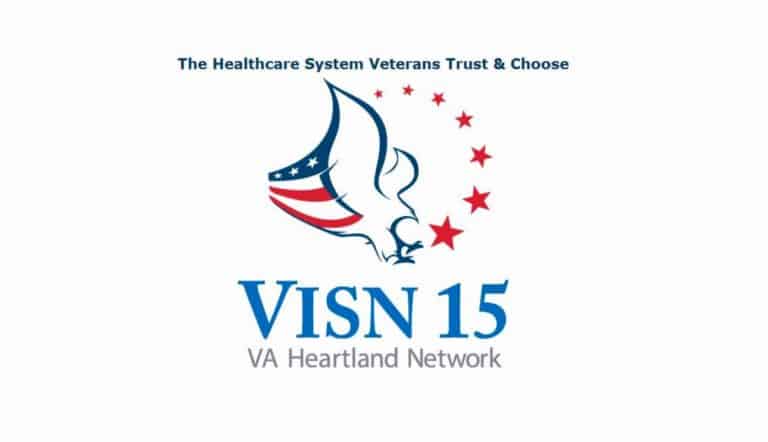How To Win Big With Your Chronic Sinusitis VA Disability Claim
Struggling with chronic sinusitis after serving in the military? This guide is tailored to veterans seeking to understand and navigate VA disability compensation. It will take you through the eligibility criteria, essential evidence, and filing techniques to help you accurately claim the benefits you’re entitled to for your service-connected sinusitis.
Key Takeaways
- Veterans who have been diagnosed with chronic sinusitis or exhibit symptoms that may be eligible for a presumptive service connection under the PACT Act are encouraged to submit a claim.
- VA Disability Compensation offers tax-exempt monthly payments to veterans with disabilities like sinusitis, with a disability rating ranging from 10 to 50% based on severity and risk factors that may affect their condition.
- Filing a VA disability claim for sinusitis requires VA Form 21-526EZ and evidence such as service connection, symptoms, ongoing issues, and medical records, and averages nearly 5 months for completion with periodic reviews to assess the condition.
- If a sinusitis claim is denied, veterans have options to challenge the decision by filing a Supplemental Claim, seeking a Higher-Level Review, or initiating a Board Appeal, with specific forms and review processes that can take from 1 to 2 years to complete.
Understanding VA Disability Compensation

Individuals who have served in the military and incurred a disability, such as sinusitis, are offered VA Disability Compensation by the Department of Veterans Affairs. This assistance takes the form of tax-exempt monthly payments. It’s designed to support veterans dealing with physical or mental health issues that stem from or are aggravated by their time in the military, including service-connected conditions like fungal infection.
The VA disability rating system assigns a percentage rating from 0% to 100% in 10% increments. This percentage reflects the severity of a veteran’s service-connected condition. For a condition like sinusitis, the disability rating is determined within a range of 10 to 50%. Veterans can seek VA benefits based on the severity of their sinusitis as a qualifying condition.
Eligibility Criteria For VA Sinusitis Rating
The VA acknowledges sinusitis as a primary service-connected condition or a secondary condition to another service-connected issue. Sinusitis has a disability rating that varies from 10 to 50%. This rating is determined by the General Rating Formula for Sinusitis under 38 CFR § 4.97, which considers the severity of the symptoms. For instance, a rating of up to 50% may be assigned for cases requiring surgery or after radical surgery with chronic osteomyelitis.
The VA conducts periodic reviews of sinusitis disability ratings to assess any changes in the veteran’s condition. These reviews also consider risk factors that may affect the severity of their sinusitis.
Filing a VA Disability Claim For Chronic Sinusitis

Filing a VA disability claim for sinusitis involves several steps. You can start the process online, use VA Form 21-526EZ and send it to the VA Evidence Intake Center, or submit the application at the nearest VA regional office. The necessary forms are available on the VA website, at the regional VA office, or can be requested via mail. Including all relevant symptoms in the application is of paramount importance.
Providing ample evidence to substantiate your claim is crucial. This includes evidence of:
- service connection
- comprehensive symptoms
- persistent ongoing issues
- medical records substantiating the diagnosis and severity of sinusitis
Ensuring the submission of sufficient evidence, including all pertinent medical records and healthcare provider statements related to the sinuses, can help prevent common filing errors.
If you need more time to find evidence, you can file a VA Form 21-0966 to declare the intent to file a claim within the next year. This form gives notice to VA you intend to file a claim, and filing it when you decide you want to file a new claim or supplemental claims can secure an earlier effective date. This proactive step ensures that your claim’s effective date remains protected even if gathering the necessary documentation and evidence takes longer than expected.
It’s like calling “dibs” on your claim date, which can be crucial when it comes to calculating back pay once your claim is granted.
Claim Process
Once you submit a VA disability claim for sinusitis, it usually takes about a week to receive confirmation of the claim, and an average of 152 days (nearly 5 months) for the claim to be completed. To accurately submit your claim for sinusitis, you need objective medical evidence demonstrating the progression of symptoms. This is assessed based on the General Rating Formula for Sinusitis (Diagnostic Codes 6510 through 6514). Upon submitting a claim to the VA, a compensation and pension (C&P) exam will be conducted by an approved examiner to evaluate your condition.
The necessary documentation for a VA disability claim for sinusitis includes VA Form 21-526EZ for initial applications or a VA Form 20-0995 for re-applications pertaining to these conditions. The evaluation of a VA disability claim for sinusitis is based on the severity of the condition. The rating criteria span from 0% to 50%, and are contingent on the symptoms and their effect on daily activities.
Evidence Requirements For Chronic Sinusitis Claims

To substantiate your VA disability claim for sinusitis, you need to provide core evidence. This evidence should establish the connection between the change in your sinusitis and your military service, rather than attributing it solely to the natural progression of the disease. Medical tests that serve as substantiating evidence include X-Rays, CT scans, and other pertinent imaging tests used to assess the seriousness and advancement of the condition.
To establish a service connection for sinusitis in a VA disability claim, you must demonstrate three essential elements:
- An event, injury, or illness related to sinusitis that occurred during service
- A current diagnosis of sinusitis
- A medical nexus that connects the in-service occurrence to the current sinusitis condition
Acceptable evidence for a VA disability claim includes objective medical evidence, such as records demonstrating a progression of sinusitis symptoms over time.
Navigating the Appeals Process
If your sinusitis claim is denied, you have three options for challenging the VA disability decision: filing a Supplemental Claim, seeking a Higher-Level Review, or initiating a Formal Appeal.
When appealing a VA disability decision, completing several forms pertinent to the type of appeal is necessary. These may include VA Form 20-0995 for new evidence, VA Form 10182 for a Formal Appeal, VA Form 20-0996 for a Higher-Level Review.
The VA appeals process offers three distinct types of reviews:
- Direct Review: This involves no submission of new evidence or holding of a hearing.
- Evidence Submission: This allows for the submission of new evidence.
- Hearing: In this type of review, you have the opportunity to present your case before a judge.
The duration of the VA appeals process can vary, but a Direct Review appeal may take approximately one year to complete, while the entire process generally takes between 18 and 24 months from start to finish.
Higher-Level Review
A Higher-Level Review in the VA appeals process enables you to:
- Petition for a review of your disability claim by a different VA employee
- Receive a fresh assessment by a higher-level reviewer
- Correct a misinterpretation of fact or law
- Have a generally expedited resolution compared to other appeals
This review is intended for expedited resolution, typically within 125 days. Choosing a Higher-Level Review provides the benefit of having your case reevaluated by a higher-level reviewer.
In a Higher-Level Review, a higher-level reviewer reevaluates the evidence without considering any new evidence. The aim is to make a new decision to rectify any errors that may have occurred in the original review. Cases appropriate for a Higher-Level Review are those where you dispute a VA decision and contend that an error was made in interpreting fact or law without the need to provide new evidence.
Formal Appeals
The process for submitting a formal appeal for a denied sinusitis claim involves filling out a Decision Review Request: Formal Appeal (Notice of Disagreement) (VA Form 10182) and submitting it to the Board of Veterans Appeals. The necessary documentation for a formal appeal includes completing a Decision Review Request: Formal Appeal (Notice of Disagreement) form, also referred to as VA Form 10182.
The typical duration for formal appeals in VA disability claims can vary, but generally, it takes between 12-36 months from start to finish. However, the duration of the process can depend on factors such as whether a hearing is requested and the specific review option chosen.
Common Medical Conditions Related to VA Disability Claims
Typical conditions for which veterans submit VA disability claims include:
- PTSD
- Diabetes
- Migraines
- Spinal and orthopedic conditions
- High blood pressure
- Arthritis
- Tinnitus
- Hearing loss
- Limitation of flexion of the knee
- Chronic pain
- Sleep problems
- Anxiety
- Depression
- Obesity
- Heart disease
- Stroke
- Skin cancer
- Other cancers
- COPD
- Mental health issues
Sinusitis is evaluated under 38 CFR § 4.97, Schedule of Ratings – the respiratory system, as part of VA disability claims. In order to qualify for benefits, a veteran must have a minimum of one service-connected disability rated at 60 percent or higher, or two or more disabilities with a combined rating of 70 percent or higher, with at least one condition rated at 40 percent or higher.
Strategies for Proving Sinusitis in Veterans

For those with chronic sinusitis or who have undergone endoscopic sinus surgery, maintaining good nasal hygiene, such as nasal irrigation with saline or xylitol, can help alleviate sinus symptoms and fatigue, as well as prevent bad breath. This practice can help veterans prevent the recurrence of sinusitis and significantly demonstrate the persistent nature of their condition for VA claims.
Allergens known to provoke sinusitis, such as:
- pollen
- ragweed
- grasses
- mold
- pet dander
- dust mites
should be avoided by veterans. Avoiding colds and flu and these allergens can help reduce the symptoms of sinusitis and contribute to supporting a veteran’s VA disability claim by demonstrating proactive management of their condition.
Avoiding Allergens and Irritants
Typical allergens and irritants that may induce or worsen sinusitis symptoms in veterans comprise pollens, dust, animal dander, molds, exposure to pollutants such as cigarette smoke, viruses, bacteria, fungi, smog, strong odors, and chemicals. Veterans can safeguard themselves from exposure by utilizing a medical alert bracelet, employing air conditioners in recirculate mode, refraining from burning trash and human waste, encasing pillows and mattresses in mite-impermeable barriers, and being cautious of irritant contact dermatitis.
Jobs or professions involving direct interaction with allergens and irritants can exacerbate sinusitis symptoms due to increased exposure.
Maintaining Good Nasal Hygiene
To prevent sinusitis complications, veterans should maintain good nasal hygiene. This may involve:
- Using a humidifier to regulate air moisture
- Staying well-hydrated by consuming ample water
- Refraining from substances like alcohol that can contribute to dehydration and sinus discomfort
- Nasal irrigation with solutions such as saline or xylitol can prove beneficial in alleviating sinus symptoms and reducing fatigue.
There are specific nasal hygiene products recommended for the prevention of sinusitis. These include:
- Neo-Synephrine
- Mucinex
- Dristan
- Afrin
- Sinex
- Zicam
- Flonase
- Neti pots
- Saline nasal sprays
These products can help clear nasal congestion and maintain clear nasal passages, crucial for preventing complications related to sinusitis, nasal polyps, and addressing issues like a deviated nasal septum.
Recognizing and Treating Sinus Infection
Symptoms of sinus infections may include:
- Sinus problems
- Rhinitis
- Breathing problems
- Allergy issues
Diagnosis is determined through medical examinations, symptom review, and may involve the use of specific diagnostic codes such as 6510-6514 to assess the severity of the sinusitis.
Veterans with sinus infections, including acute sinusitis and deviated septum, commonly resort to treatment options like antibiotics for bacterial sinus infection, inhaled corticosteroid medications to lessen inflammation, and nasal irrigation systems for sinus hygiene.
Military service can significantly increase the probability and severity of sinus infections in veterans, especially for those who have been exposed to smoke from burn pits. This exposure is a crucial factor considered when planning the treatment for sinus infections in veterans.
Sinus Infection Symptoms

Distinctive symptoms of sinus infections in veterans may include:
- Postnasal drip
- Headaches
- Throat pain
- Purulent discharge
- Coughing spells
- Constant cough
- Fatigue in chronic cases
Sinus infections can significantly affect the general health and wellbeing of veterans, leading to symptoms like nasal congestion, facial pain, and headaches, which can hinder daily activities and reduce the quality of life.
Summary
This blog post has provided a comprehensive overview of the VA disability compensation system, the claim process for sinusitis, and strategies veterans can employ to prove sinusitis. We’ve examined the importance of maintaining good nasal hygiene, avoiding allergens and irritants, and understanding the symptoms and treatments for sinus infections. We hope this information empowers you on your path to maximizing your VA sinusitis claim.
Frequently Asked Questions
What is the 5-year rule for VA disability?
The 5-year rule for VA disability ensures that the VA cannot reduce your disability rating unless there has been significant improvement in your condition over that time. This rule applies to disability ratings that have been in effect for five years or longer.
What are the new VA disability rates for 2024?
In 2024, the new VA disability rates are as follows: for a veteran alone – 100% disability rating: $3,737.85/month, 90% disability rating: $2,241.91/month, and 80% disability rating: $1,995.01/month.
What conditions qualify for disability in VA?
Conditions like PTSD, diabetes, migraines, spinal and orthopedic conditions, and other health issues that prevent you from working for a year or more can qualify for disability benefits in Virginia. Musculoskeletal disorders, mental disorders, nervous system diseases, and circulatory system diseases are also commonly recognized.
What does 80% VA disability get you?
An 80% VA disability rating gets you a monthly payment of $1,995.01, which may be adjusted each year to account for changes in the cost-of-living.
What is VA Disability Compensation?
VA Disability Compensation is a form of assistance provided by the Department of Veterans Affairs to veterans who have developed disabilities due to their military service. It includes tax-exempt monthly payments for physical or mental health issues resulting from or exacerbated by their time in the military.





